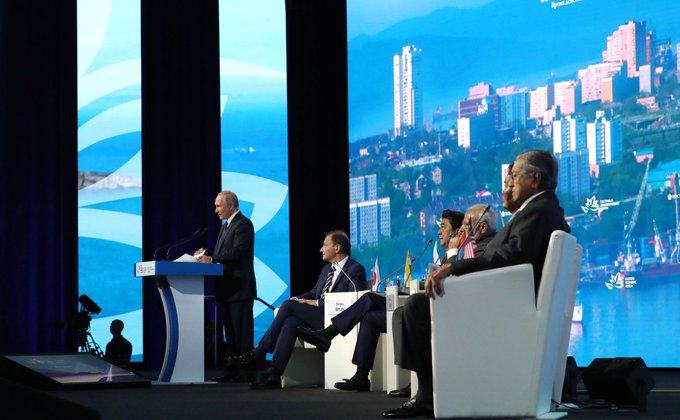Climbing the escalation ladder
All-in decoupling has started
Oct 13, 2025

As if following a pre-ordained script, the US China trade and tech war escalated to a peak last week when China launched a range of hard-hitting counter measures against the US in retaliation for its provocations, including severe restrictions on rare earth products.
Predictably, Trump went into a blind rage and raised import tariff of Chinese goods by 100% while threatening to cancel a meeting with President Xi, which has never been confirmed by Beijing in the first place.
Trump launched a series of bombastic tweets on his Truth Social, decrying Chinese hostility and unfairness.
If anything, this shows Beijing has mastered the art of pushing Trump’s button. Like a toy, Trump’s mood and behavior is regulated by remote control in the hands of Beijing’s technocrats who design its policies to counter the US.
Despite the show of progress and professed optimism for a potential de-escalation in the Madrid trade talks, the US wasted no time to launch a series of trade and tech sanctions against China immediately afterwards, just like it launched the sneak attack on Iran shortly after its 5th round nuclear talks with Tehran.
– The US Bureau of Industry and Security (BIS) tightened its chip ban on China, expanding the embargo to cover all semiconductor related software and equipment sales to China, in an effort to completely choke off China’s ability for chip production
– Washington expanded its entity list (i.e. black list) to deny high end sales to businesses outside of China that have 50% or more Chinese ownership
– It announced a plan to charge million-dollar port fees for any Chinese-operated shipping companies, Chinese-made ships, or non-Chinese shippers with Chinese-made ships in their fleet or on their order books, in an effort to undermine China’s shipping building industry
– Washington also put a 721% tariff on Chinese clean energy products such as solar panels
– It imposed 50% tariff on semi-finished copper products and copper-intensive goods (e.g., wiring, batteries) under Section 232, targeting China’s dominance in EV/tech supply chains
– It ended de minimis exemption for low-value packages, hitting e-commerce from Chinese platforms such as Temu and Shein
Faced with the bad faith from the Trump regime, China retaliated swiftly with a suite of counter actions:
– Beijing published its latest restrictions on rare earth products to deny any sales of China-sourced rare earth magnets, processing technology, and equipment to foreign military and semi-conductor industry
– It revoked import license for US lumber and soybeans. China was the biggest buyer of US soybeans in the past and accounted for over 50% its export. But it has ordered no purchase in 2025
– Beijing announced it would charge reciprocal port fees for any US-operated or US-owned shipping companies. China runs 7 out of the world’s top ten container ports and has by far the highest port calls. Though the US builds few ships and few large shipping companies are US operated, US pension funds and asset managers own large shares in some of the world’s top shipping companies like Maersk which are now subject to the port fees. This move directly targets US financial interests
– China also tightened up export of lithium ion and graphite anode, critical for green transformation
– It expanded the unreliable list (China’s answer to the entity list) to cover more US defense contractors, tech firms, and critical mineral companies. It also launched anti-trust investigation against Qualcomm, a large US chip manufacturer
The latest tit for tats strongly indicates China is ready to move up the escalation ladder in its confrontation with the US on trade and technology issues.
In particular, Beijing’s enhanced rare earth restrictions are expected to deal a massive blow to high tech and military production in the US and its vassals.
In its embargo of chip technology against China, the US utilized the Foreign Direct Product Rule (FDPR) to block chip export to China if non-US made chips use any American technology, software, or equipment somewhere along the supply chain.
In essence, the FDPR allows US to claim jurisdiction to any products US technology touches even if it is made overseas such as the case with TSMC and ASML. The rule gives the US extraterritorial reach.
With the new rare earth restrictions, China flips the logic back to the US. Beijing has announced any non-Chinese companies operating anywhere must obtain Beijing’s approval to export rare earth magnets or semiconductors if those products contain Chinese original rare earth, or if they are produced using Chinese rare earth technology, process or equipment.
Beijing is denying all rare earth products, technology, equipment, and technical support to foreign end users it doesn’t approve.
In my essays, I have discussed many times that rare earth products are far more complicated than mining itself.
The most complicated part of rare earth production is in the processing and refining stage, where China controls over 90% global market share. In the military-critical heavy rare earth segment, China’s control is complete at over 99%.
Beyond military applications, China is tightening control of rare earth products to be used in semiconductor manufacturing.
Semiconductor manufacturing is heavily dependent on rare-earth elements, concentrated in a few critical steps in the supply chain.
The main choke-points include:
– Chemical–mechanical planarization (CMP) to polish wafer surfaces. There is no viable substitute at <5 nm nodes
– High-k gate dielectrics to cut leakage in 3 nm-class logic chips
– Lithography & etch-tool motors/robotics. Equipment halts if magnets overheat
A single Chinese export-license delay in early 2025 forced ASML to quote “weeks-long” lead-time extensions on EUV tools. And chipmakers have seen Nd-Pr magnet prices spike >40 % within a quarter after each prior Chinese quota.
Bottom line is semiconductors cannot be built without rare earths at yield, at scale, or at 3 nm, with today’s technology.
Washington tried to stranglehold China’s access to advanced chips, without realizing China sits at the upstream of the most advanced semiconductor supply chain with its rare earth monopoly.
People who live downstream typically don’t try to choke those who live upstream. The US cannot change such physical laws.
Talk about sanction boomerang.
China’s strategic bet is that it will close its advanced chip gap faster than the US and its vassals can close the rare earth and reindustrialization gaps.
It is also betting the cost of the US reinventing the rare earth wheel will be higher than the cost of China’s building a self-reliant semiconductor supply chain.
Lastly, Beijing is betting it can execute better and have better infrastructure, talent, capable bureaucracy to deliver on its industrial policy more effectively than its competitor.
Through the sweeping sanctions, China denies the US any ability to negotiate from a position of strength.
Trump can start the trade and tech war. President Xi is determined he will finish it.





/https://www.niagarafallsreview.ca/content/dam/thestar/news/canada/2021/09/25/huawei-executive-meng-wanzhou-receives-warm-welcome-upon-return-to-china/_1_meng_wanzhou_2.jpg)



















No comments:
Post a Comment
Note: Only a member of this blog may post a comment.